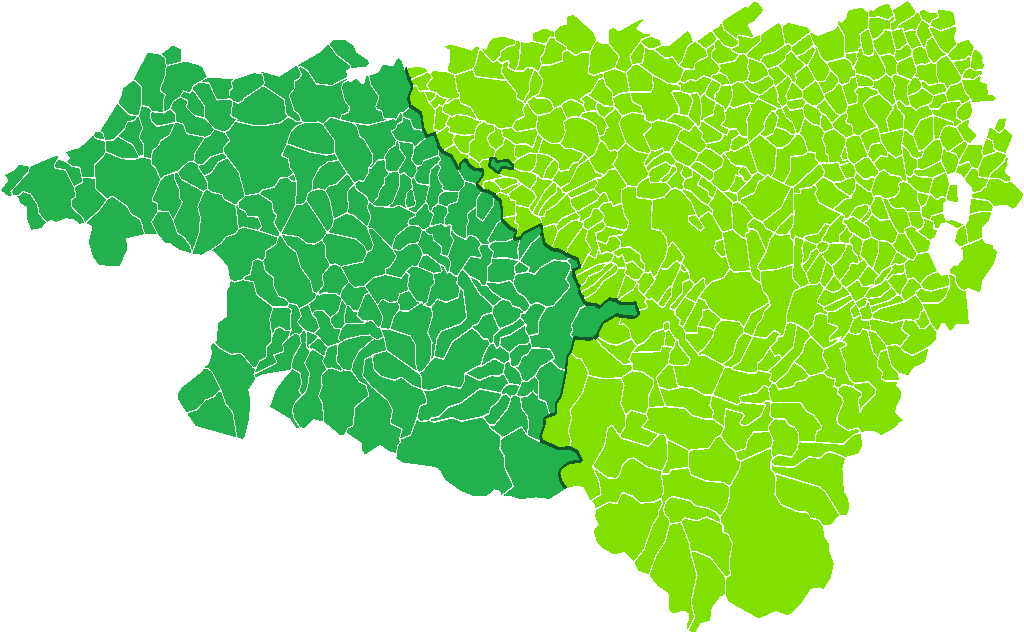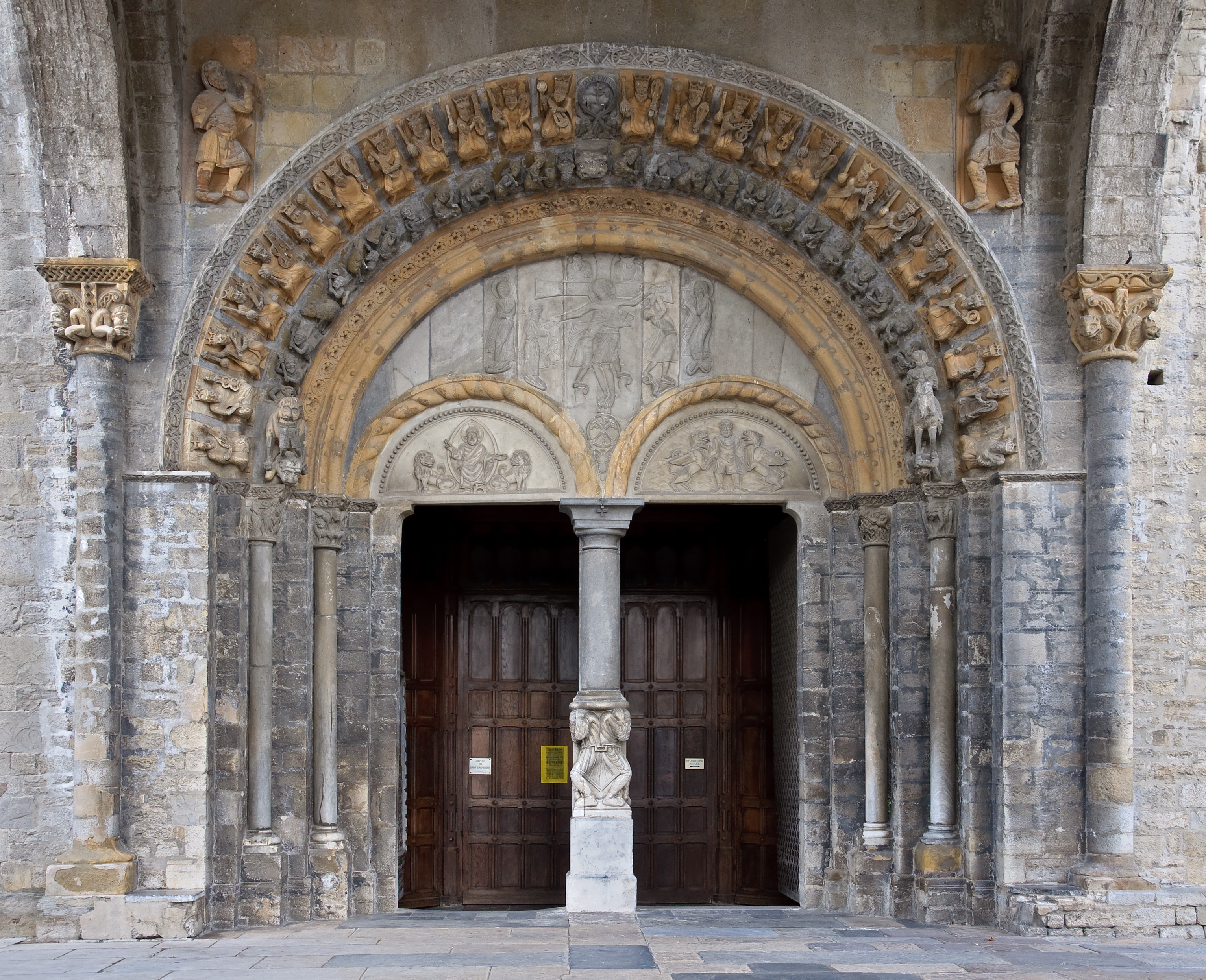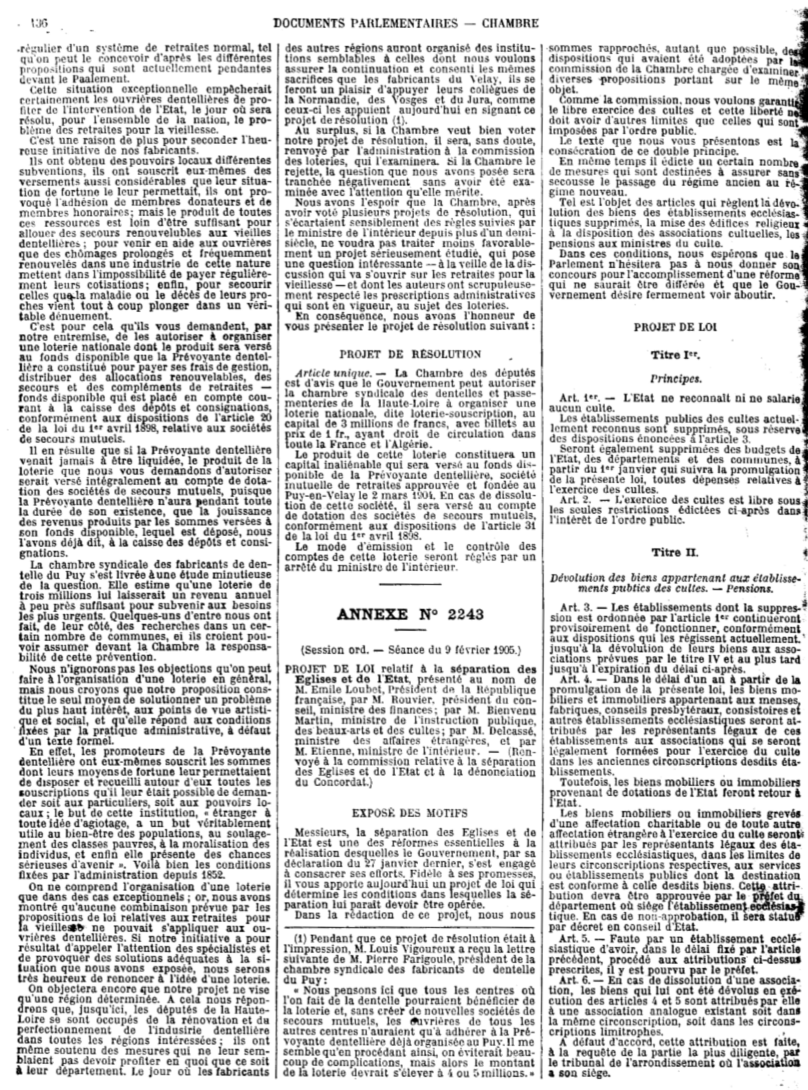|
Bishop Of Oloron
The former Roman Catholic Diocese of Oloron was a Latin rite bishopric in Pyrénées-Atlantiques department, Aquitaine region of south-west France, from the 6th to the 19th century. History The diocese of Oleron already existed in the 6th century, when Bishop Gratus attended the Council of Agde. The diocese of Oleron was a suffragan (provincial subordinate) to the Archdiocese of Eauze, holding the eighth place of nine, until Eauze was destroyed by the Normans around 845. It then became a suffragan of Auch, which was raised to the status of a metropolitan archbishopric in 847. For administrative purposes the diocese was subdivided (by the thirteenth century) into six archdeaconries, those of Oleron, Soule, Navarrenx, Garenz, Aspe, and Lasseube. The archdeaconries and archpriesthoods disappeared in the sixteenth century, when Béarn was protestantized by the official policy of the royal house of Navarre, especially by Jeanne d'Albret. The bishops of Oleron were also seigneurs o ... [...More Info...] [...Related Items...] OR: [Wikipedia] [Google] [Baidu] |
Pyrénées-Atlantiques
Pyrénées-Atlantiques (; Gascon Occitan: ''Pirenèus Atlantics''; eu, Pirinio Atlantiarrak or ) is a department in the southwest corner of France and of the region of Nouvelle-Aquitaine. Named after the Pyrenees mountain range and the Atlantic Ocean, it covers the French Basque Country and the Béarn. Its prefecture is Pau. In 2019, it had a population of 682,621.Populations légales 2019: 64 Pyrénées-Atlantiques INSEE History Originally named Basses-Pyrénées, it is one of the first 83 created during the |
Estates Of Béarn
The Estates of Béarn are the former Provincial Estates of Béarn. It was formed following the death of Gaston III/X of Foix-Béarn, alias Gaston Phoebus,Barraqué, p. 33(in French)/ref> on 1 August 1391, as a sort of Extraordinary Assembly, regrouping the representatives of the various courts of Béarn, most notably those of the "Cour des Communautés" and of the " :fr:Cour majour" that had been disbanded by Gaston Phoebus. It assembled for the first time on 8 August 1391 and held its last meeting from 12–23 October 1789.Bidot-Germa, p. 5(in French)/ref> However, it was dissolved in 1620 amid strong opposition voiced by the Bearnese representatives, following the royal military expedition to Pau. The Chancery of Navarre and the Estates of Béarn were merged into the Parliament of Navarre. When the National Assembly abolished all privileges on 4 August 1789, an exception was made allowing the Estates of Béarn to express their consent. Deliberations took place in a charged atmos ... [...More Info...] [...Related Items...] OR: [Wikipedia] [Google] [Baidu] |
Moorish
The term Moor, derived from the ancient Mauri, is an exonym first used by Christian Europeans to designate the Muslim inhabitants of the Maghreb, the Iberian Peninsula, Sicily and Malta during the Middle Ages. Moors are not a distinct or self-defined people. The 1911 ''Encyclopædia Britannica'' observed that the term had "no real ethnological value." Europeans of the Middle Ages and the early modern period variously applied the name to Arabs and North African Berbers, as well as Muslim Europeans. The term has also been used in Europe in a broader, somewhat derogatory sense to refer to Muslims in general,Menocal, María Rosa (2002). ''Ornament of the World: How Muslims, Jews and Christians Created a Culture of Tolerance in Medieval Spain''. Little, Brown, & Co. , p. 241 especially those of Arab or Berber descent, whether living in Spain or North Africa. During the colonial era, the Portuguese introduced the names "Ceylon Moors" and "Indian Moors" in South Asia and Sri Lanka ... [...More Info...] [...Related Items...] OR: [Wikipedia] [Google] [Baidu] |
Cathedral
A cathedral is a church that contains the '' cathedra'' () of a bishop, thus serving as the central church of a diocese, conference, or episcopate. Churches with the function of "cathedral" are usually specific to those Christian denominations with an episcopal hierarchy, such as the Catholic, Eastern Orthodox, Anglican, and some Lutheran churches.New Standard Encyclopedia, 1998 by Standard Educational Corporation, Chicago, Illinois; page B-262c Church buildings embodying the functions of a cathedral first appeared in Italy, Gaul, Spain, and North Africa in the 4th century, but cathedrals did not become universal within the Western Catholic Church until the 12th century, by which time they had developed architectural forms, institutional structures, and legal identities distinct from parish churches, monastic churches, and episcopal residences. The cathedral is more important in the hierarchy than the church because it is from the cathedral that the bishop governs the area unde ... [...More Info...] [...Related Items...] OR: [Wikipedia] [Google] [Baidu] |
Oloron-Sainte-Marie
Oloron-Sainte-Marie (; oc, Auloron e Senta Maria; eu, Oloroe-Donamaria) is a commune in the Pyrénées-Atlantiques department, region of Nouvelle-Aquitaine (before 2015: Aquitaine), southwestern France. History The town was founded by the Romans in the 1st century, then known as ''Illoronensium''. Situated on the Roman way between the important towns of Dax and Saragossa, its position was strategic. Today known as Saint-Great, Gratus of Oloron became in 506 the first known archbishop of the Ancient Diocese of Oloron then known as "Iluro". The history of the town during the Migration Period is little known. In 1080, the viscount Centule V, Viscount of Béarn built the new city of "Oloron" (medieval version of the Roman name Iluro) on the opposite side of the river from the diocese center. Centule V restored the Roman walls and founded the strong city of Oloron that was to be used as a base to retake Aragon held by the Moors. The Oloron Cathedral was built at the begi ... [...More Info...] [...Related Items...] OR: [Wikipedia] [Google] [Baidu] |
Oloron Cathedral
Oloron Cathedral (french: Cathédrale Sainte-Marie d'Oloron-Sainte-Marie), now St. Mary's Church (french: Eglise Sainte-Marie), is a Roman Catholic church and former cathedral located in the town of Oloron-Sainte-Marie, in the Pyrénées-Atlantiques ''département'' of France. It is in the Romanesque and Gothic architectural traditions. Construction was started in the 12th century by Gaston IV, Viscount of Béarn. It was the seat of the Bishopric of Oloron, suppressed by the Concordat of 1801. It has been listed as a ''monument historique'' by the French Ministry of Culture since March 1939, and was named a World Heritage Site by UNESCO The United Nations Educational, Scientific and Cultural Organization is a specialized agency of the United Nations (UN) aimed at promoting world peace and security through international cooperation in education, arts, sciences and culture. It ... in 1998. [...More Info...] [...Related Items...] OR: [Wikipedia] [Google] [Baidu] |
Oloron Ste-Marie 02
Oloron-Sainte-Marie (; oc, Auloron e Senta Maria; eu, Oloroe-Donamaria) is a commune in the Pyrénées-Atlantiques department, region of Nouvelle-Aquitaine (before 2015: Aquitaine), southwestern France. History The town was founded by the Romans in the 1st century, then known as ''Illoronensium''. Situated on the Roman way between the important towns of Dax and Saragossa, its position was strategic. Today known as Saint-Great, Gratus of Oloron became in 506 the first known archbishop of the Ancient Diocese of Oloron then known as "Iluro". The history of the town during the Migration Period is little known. In 1080, the viscount Centule V, Viscount of Béarn built the new city of "Oloron" (medieval version of the Roman name Iluro) on the opposite side of the river from the diocese center. Centule V restored the Roman walls and founded the strong city of Oloron that was to be used as a base to retake Aragon held by the Moors. The Oloron Cathedral was built at the beginni ... [...More Info...] [...Related Items...] OR: [Wikipedia] [Google] [Baidu] |
Way Of St James
The Camino de Santiago ( la, Peregrinatio Compostellana, "Pilgrimage of Compostela"; gl, O Camiño de Santiago), known in English as the Way of St James, is a network of pilgrims' ways or pilgrimages leading to the shrine of the apostle Saint James the Great in the cathedral of Santiago de Compostela in Galicia in northwestern Spain, where tradition holds that the remains of the apostle are buried. As Pope Benedict XVI said, "It is a way sown with so many demonstrations of fervour, repentance, hospitality, art and culture which speak to us eloquently of the spiritual roots of the Old Continent." Many follow its routes as a form of spiritual path or retreat for their spiritual growth. It is also popular with hiking and cycling enthusiasts and organized tour groups. Created and established after the discovery of the relics of Saint James the Great at the beginning of the 9th century, the Way of St James became a major pilgrimage route of medieval Christianity from the 10th cent ... [...More Info...] [...Related Items...] OR: [Wikipedia] [Google] [Baidu] |
Diocese Of Lescar
The Roman Catholic Diocese of Lescar (Latin: ''Dioecesis Lascurrensis;'' French: ''Diocèse de Lescar''; Basque: ''Leskarreko elizbarrutia''), in south-western France, was founded in the fifth century, and continued until 1790. It was originally part of the Province of Novempopulania, and Lescar held the seventh place among the cities. Its see was the Cathedral of the Assumption in Lescar, begun in 1120; the crypt of the cathedral was also the mausoleum of the family of Albret in the 16th century. The bishopric was suppressed by the Legislative Assembly during the French Revolution , in the Civil Constitution of the Clergy in September 1790, as part of a systematic effort to eliminate redundant bishoprics in France. By the Concordat of 1801, struck by First Consul Napoleon Bonaparte and Pope Pius VII, the diocese of Lescar was not revived, and the territory of the diocese was divided between the diocese of Agen and the diocese of Bayonne. Bishops of Lescar to 1200 * ? c. 5 ... [...More Info...] [...Related Items...] OR: [Wikipedia] [Google] [Baidu] |
Diocese Of Bayonne
The Diocese of Bayonne, Lescar, and Oloron, commonly Diocese of Bayonne, (Latin: ''Dioecesis Baionensis, Lascurrensis et Oloronensis''; French language, French: ''Diocèse de Bayonne, Lescar et Oloron''; Basque language, Basque: ''Baionako, Leskarreko eta Oloroeko elizbarrutia'') is a Latin Church ecclesiastical territory or diocese of the Catholic Church in France. It is a suffragan diocese in the ecclesiastical province of the metropolis (religious jurisdiction), metropolitan Archdiocese of Bordeaux. The diocese comprises the ''Departments of France, département'' of Pyrénées-Atlantiques, in the ''Regions of France, région of Nouvelle-Aquitaine. Its cathedral, the Bayonne Cathedral, Cathédrale Notre-Dame in Bayonne is a World Heritage Site. Elsewhere in Aquitaine, the diocese contains two former cathedrals: the ''Ancienne cathédrale Notre-Dame de the Assumption,'' in Lescar; and the ''Ancienne cathédrale Sainte-Marie'', in Oloron-Sainte-Marie. Diocesan borders The southe ... [...More Info...] [...Related Items...] OR: [Wikipedia] [Google] [Baidu] |
Concordat Of 1801
The Concordat of 1801 was an agreement between Napoleon Bonaparte and Pope Pius VII, signed on 15 July 1801 in Paris. It remained in effect until 1905, except in Alsace-Lorraine, where it remains in force. It sought national reconciliation between revolutionaries and Catholics and solidified the Roman Catholic Church as the majority church of France, with most of its civil status restored. This resolved the hostility of devout French Catholics against the revolutionary state. It did not restore the vast church lands and endowments that had been seized upon during the revolution and sold off. Catholic clergy returned from exile, or from hiding, and resumed their traditional positions in their traditional churches. Very few parishes continued to employ the priests who had accepted the Civil Constitution of the Clergy of the Revolutionary regime. While the Concordat restored much power to the papacy, the balance of church-state relations tilted firmly in Napoleon's favour. He ... [...More Info...] [...Related Items...] OR: [Wikipedia] [Google] [Baidu] |
1905 French Law On The Separation Of The Churches And The State
The 1905 French law on the Separation of the Churches and State ( French: ) was passed by the Chamber of Deputies on 9 December 1905. Enacted during the Third Republic, it established state secularism in France. France was then governed by the ''Bloc des gauches'' (Left Coalition) led by Émile Combes. The law was based on three principles: the neutrality of the state, the freedom of religious exercise, and public powers related to the church. This law is seen as the backbone of the French principle of ''laïcité'' (secularism). It is however not applicable in Alsace and Moselle, which were part of Germany when it was enacted. History Prior to the French Revolution of 1789 — since the days of the conversion of Clovis I to Christianity in 508 AD — Roman Catholicism had been the state religion of France, and closely identified with the ''Ancien Régime''. However, the revolution led to various policy changes, including a brief separation of church and state in 1795, ended b ... [...More Info...] [...Related Items...] OR: [Wikipedia] [Google] [Baidu] |




.jpg)

